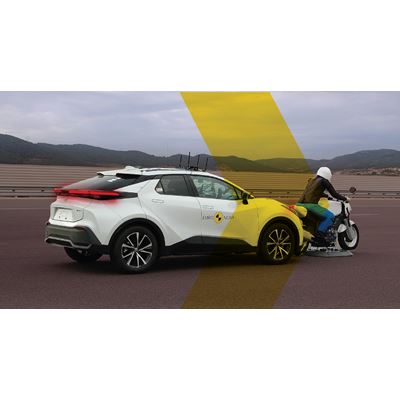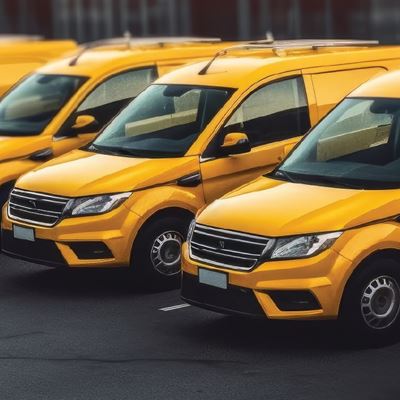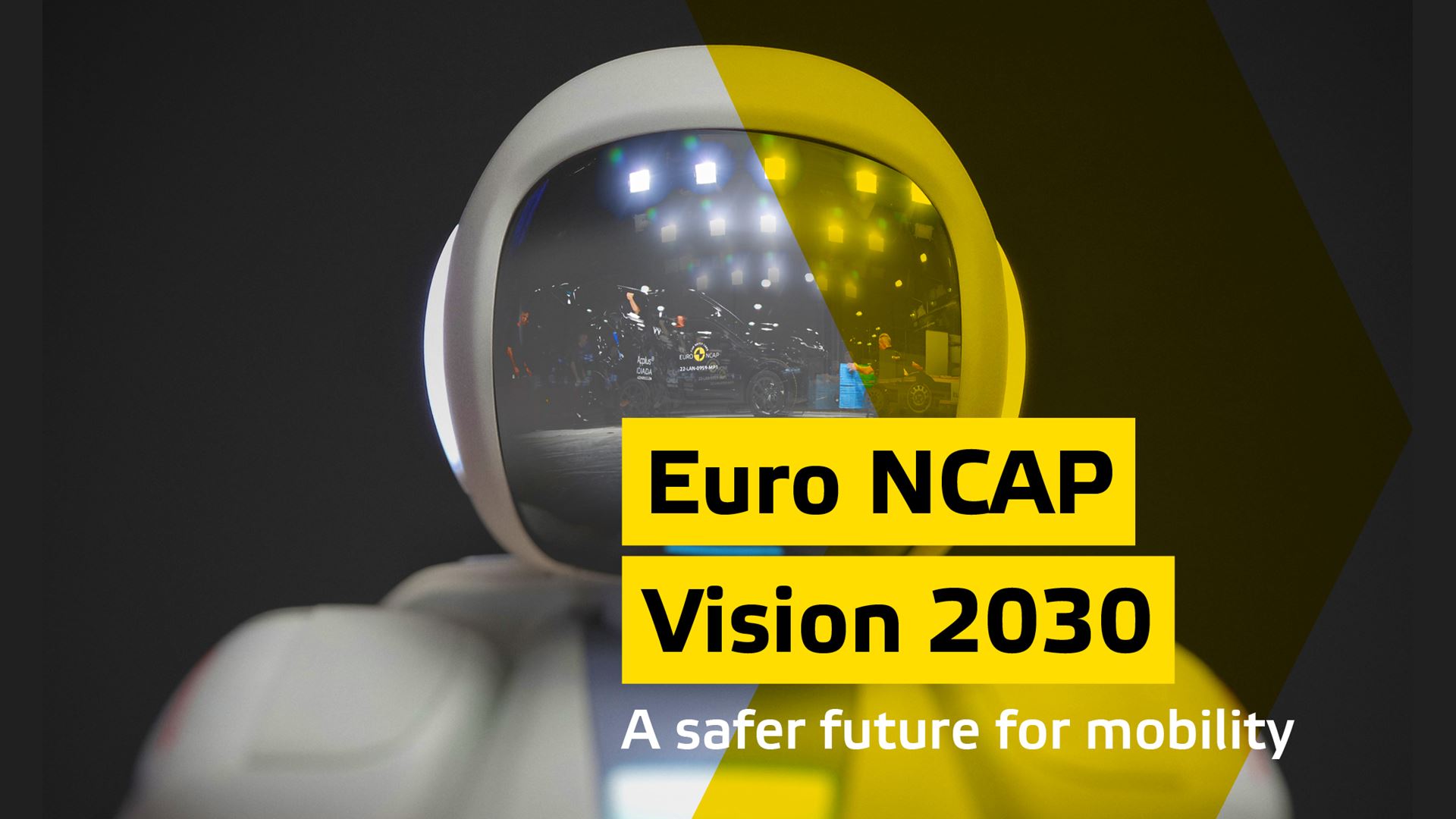Euro NCAP Vision 2030: a Safer Future for Mobility
09 November 2022 – Today, Euro NCAP releases its new Vision 2030: a Safer Future for Mobility that outlines a clearer path for safer vehicles and offers greater certainty for European consumers. This roadmap sets the focus of vehicle safety for European industry over the next decade, but also presents the role that Euro NCAP will play in the context of the future mobility landscape. In this roadmap, Euro NCAP also makes a commitment to push for vehicle safety developments and testing that reflects the diversity of the European population.
The release of the Vision 2030 establishes the key focus areas for the European new vehicle market – both for existing automotive industry stakeholders, but also for new industry stakeholders that have not previously been involved in the Euro NCAP process.
Reflecting the technology shift to encourage assisted and automated driving technologies, the four key areas of Euro NCAP assessment - in place since 2009 - will be adjusted to four distinct phases of a potential crash event: Safe Driving; Crash Avoidance; Crash Protection; and Post-Crash Safety. This change will take effect from 2026, with Euro NCAP moving to a three-year protocol update cycle.
Euro NCAP will be phasing in virtual testing, improving testing for vulnerable road user protection, and introducing rating incentives for a range of driver monitoring systems.
Key additions to the Euro NCAP programme, looking forward to 2030 also include:
- Testing and assessment of Assisted and Automated driver support systems
- Assessment of technology that monitors driver impairment and cognitive distraction
- Requirements to further improve the real-world efficacy of speed assistance technology
- Active safety tests which more closely simulate real road environments and examine human-machine interaction (HMI) design, ensuring more robust and efficient driver assistant systems
- Testing and assessment of safety functions enabled by V2V, V2I and V2X communication
- Passive safety tests which give greater focus to gender equality and the aging population of drivers/occupants
- Evaluation of fire risk and thermal runaway in electric vehicles and improved information for first and second responders
- Promoting best practice in vehicle security and data access.
Euro NCAP is setting its sights on new programmes that will assess the safety of motorcycles and motor scooters ‘powered two wheelers’ as well as light and heavy goods vehicles, seeking to address the overrepresentation of these vehicles in road fatalities and serious injuries.
‘Euro NCAP’s achievements in its 25 years long history, are testament to the programme’s enduring success and relevance. Despite major developments in safety in passenger cars, our work is not done. Euro NCAP, strongly believes that it holds the potential to further improve vehicle safety in the next decade in support of a Vision Zero which strives to eliminate fatalities and the seriously injured in road crashes,’ says Dr Niels Ebbe Jacobsen, President of Euro NCAP.
‘Cars are becoming more advanced as manufacturers work towards their goal of autonomous and connected vehicles. We are not yet living in an era of fully self-driving cars but driving support technologies are becoming widespread. Given the importance of these assisted and automated driving technologies, Euro NCAP will adopt a penalty/rewards approach for cars that offer these systems. Also, Euro NCAP intends to accommodate all forms of connectivity and the various technical communication standards in the rating by evaluating each safety function in a technological neutral way.
By developing timely voluntary standards for advanced safety technology, Euro NCAP sees an opportunity to act as a catalyst for accelerating uptake and promoting best practice, not just for passenger cars but also in the commercial vehicle fleet’, says Michiel van Ratingen, Euro NCAP’s Secretary General. ‘Collaboration with industry is essential and has been key to our success. We are looking forward to working together towards meeting the objectives outlined for the next decade.’
Euro NCAP would like to sincerely thank all in the sector who provided input for ‘Euro NCAP Vision 2030: A Safer Future for Mobility’.
This Vision 2030 roadmap is produced in close collaboration with ANCAP.
Editor’s note
For full results, visit www.euroncap.com or Euro NCAP's newsroom for journalists.
For media information, please contact Cordelia Wilson at media@euroncap.com.
Follow us online and on social media:
Twitter
Facebook
Instagram
YouTube
About Euro NCAP
Euro NCAP organizes crash & safety tests on new vehicles and provides motoring consumers with a realistic and independent assessment of the safety performance of some of the most popular cars sold in Europe. Established in 1997 and backed by several European Governments, motoring, consumer and insurance organizations, Euro NCAP has rapidly become a catalyst for encouraging significant safety improvements to new car design. Visit our website: www.euroncap.com.
Euro NCAP ratings strictly apply to vehicles of the specifications offered in Europe. The ratings do not necessarily apply to models offered in other regions, even when sold under an identical name, as production specification and equipment may vary.
MEDIA
PRESS RELEASE DOWNLOAD
CONTACTS
-
Cordelia WilsonMedia AdvisorUnited Kingdommedia@euroncap.com+44 7857 915 964
MORE FROM LATEST RELEASE
-



Euro NCAP reveals details of the first ever Heavy Truck safety rating tests at NCAP24
-



Euro NCAP releases safety results for three highly anticipated cars: the NIO EL6, the Toyota C-HR, and the Honda CR-V
-



Euro NCAP to Launch New Round of 2024 Safety Results
-



Euro NCAP calls on carmakers to make ADAS more widely available in small panel vans









